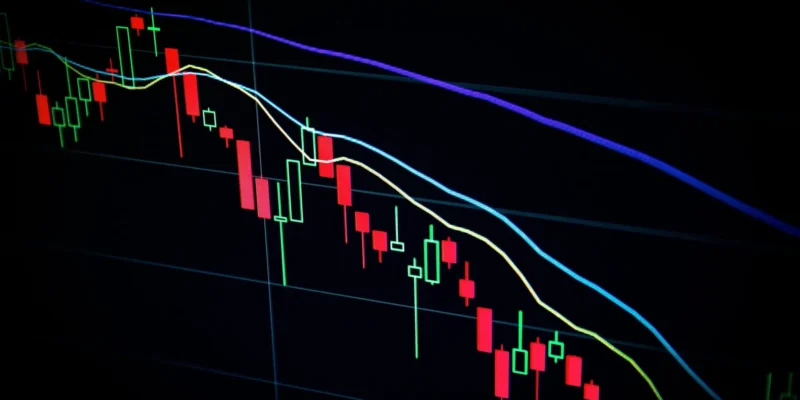
Day trading patterns are a tool traders can use when engaging in day trading. While it doesn’t provide a 100% guarantee of profit, it does allow traders to navigate market sentiment, price movements, and prevailing trends. Patterns can be used manually or automated, as done by your trading robots, which you can find at ForexStore. In any case, understanding the fundamental patterns serves as the foundation upon which you can rely. Let’s delve into the meanings of all these charts and images that appear on your timeframes.
Common Day Trading Patterns Explained
In fact, there are quite a few patterns, and each of them provides clues on how to act in a particular situation. Let’s explore the best day trading patterns that will help you navigate the current situation and make informed decisions.
Bull Flag Pattern
The Bull Flag Pattern is a trend continuation model. When such a figure appears on the chart, this indicates that it may resume after a slight weakening or consolidation of the trend. It looks on the chart like a proper, slightly downward-sloping rectangle.
The appearance of such a flag on the chart means that the selling pressure is insufficient to change the price and the overall trend. To trade successfully when you see such a pattern on the chart, you need to follow the trend and open a long position. Also, it is essential to set a stop-loss at a level below the consolidation minimum and a take-profit significantly above the entry point, as such a figure may indicate a fairly strong upward jump. Next, observe: if you see that the price continues to consolidate, move the stop-loss higher to keep the trade break-even for you.
Bear Flag Pattern
Bearish patterns (links ) are always the complete opposite of bullish patterns. In the case of a Bear Flag, it means that bearish market control continues, and it’s an excellent time for short positions. The key here is to ensure the decline is ongoing (use additional technical indicators to confirm or refute your assumptions). This will help you trade effectively while avoiding risks.
Head and Shoulders Pattern
The Head and Shoulders pattern is a bearish reversal pattern that consists of a higher peak (head) and two lower peaks (shoulders). The neckline formed by these peaks serves as a support level. If you notice such a pattern on the chart, it indicates that buying pressure is weakening, bulls are losing control of the market, and bears are attempting to push the price down. In other words, the “Head and Shoulders” pattern is a signal to sell assets. Place the stop-loss above the right shoulder and choose the take-profit level at the previous key support level.
Double Top and Double Bottom Patterns
Double Top and Double Bottom patterns signal the possibility of a trend reversal. The difference between them lies in the direction of the reversal. Both patterns have peak points, a trough between the two peaks (or troughs in the case of a double bottom), and a neckline break. The neckline break is the trader’s reference point.
How to use these day trade patterns?
- In the case of a Double Top, you have several options: wait for the price of the asset to drop below the neckline level and then open short positions or sell positions. Alternatively, you can wait for the price to drop to the neckline level, look for a trendline break with the help of additional indicators, and place a short position.
- When your chart shows a Double Bottom pattern (a bullish reversal pattern), this pattern signals a further strong upward trend. This allows you to enter a trade, set the take-profit level significantly higher than the entry point, and wait for the price to reach the desired level. It is optimal to set the take-profit at a distance equal to or greater than the distance between the neckline and the bottom points of the pattern (troughs).
Psychological Aspects of Day Trading Patterns
Day trading requires maximum involvement from the trader in the trading process, leaving less time for in-depth technical or fundamental analysis. As a result, such trading is quite stressful and requires increased attention and discipline. However, professionals must notice patterns and signals on charts accurately and quickly, as well as seek confirmation of their forecasts using additional indicators.
So, if you are planning to try day trading, be prepared for all these challenges or study the theoretical part and set up a trading robot — this will allow you to benefit from day trading while risking less.
Tips for Day Traders Using Patterns
Several important aspects can significantly simplify your work if you choose one of the day trading strategies.
- Try to assess market sentiment and conduct technical analysis before starting active trading. Analyze multiple timeframes to determine the overall trend and filter out potentially false signals.
- Use not only charts and patterns but also indicators like RSI, MACD, or Stoch. These tools will allow you to see more clearly when to buy or sell assets.
- Wait for the formation of a pattern and only then take action. Day trading happens relatively quickly, but excessive haste can be harmful. Remember that both bulls and bears set their traps, so some trends quickly reverse and move in the opposite direction. Such movements are most noticeable on small timeframes.
- Never forget about stop-loss and take-profit levels; they will prevent you from losing your entire capital and help you achieve a relatively stable income.
Whatever happens, no matter how the trade goes, keep your head. This is probably the most important rule, no less crucial than understanding the technical aspects. As long as you remain calm, you can make informed decisions and avoid most losing trades.
Summary
Patterns are one of the simplest topics in trading, so you can easily master them. Try to not only learn them in theory but also reinforce this knowledge with practical experience: first, test your skills on a demo account, and only then proceed to trade with your main capital.







